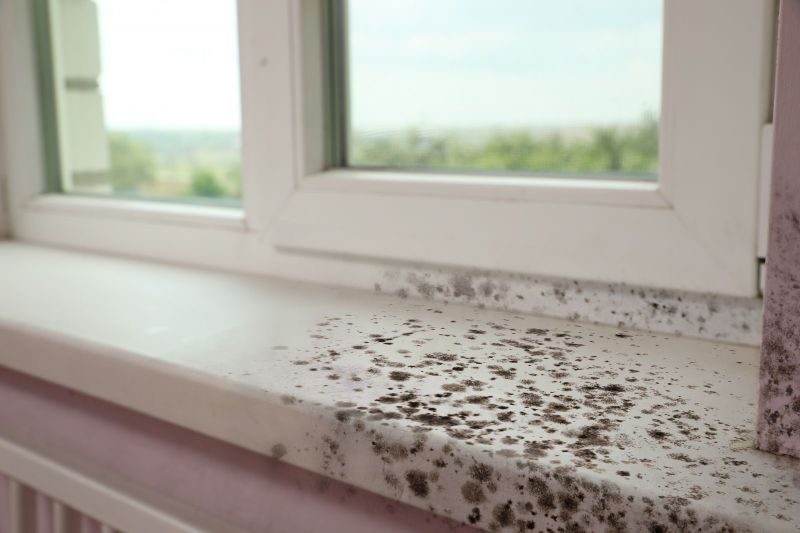Mold, a common and persistent issue in many homes, can pose significant health risks and damage to property. When it comes to addressing mold, understanding the process of mold remediation is crucial. In this blog post, we'll delve into the essential aspects of mold remediation, providing you with the knowledge you need to tackle mold issues effectively and ensure a healthier living environment.
- Understanding Mold: The Silent Invader:
Mold, a type of fungus, thrives in damp and humid conditions. It can grow on various surfaces, including walls, ceilings, and even household items. Identifying the signs of mold, such as musty odors and visible growth, is the first step in addressing the issue.
- Health Risks Associated with Mold Exposure: Taking Mold Seriously:
Mold can release spores into the air, leading to respiratory issues, allergies, and other health problems. Vulnerable individuals, such as those with asthma or compromised immune systems, are particularly at risk. Taking mold exposure seriously is essential for maintaining a healthy living environment.
- Mold Inspection and Assessment: Identifying the Scope of the Issue:
Before initiating mold remediation, a thorough inspection and assessment are necessary. Professionals in mold remediation evaluate the extent of the mold growth, identify the type of mold present, and assess the conditions that contribute to mold development.
- Moisture Control: Addressing the Root Cause:
Mold thrives in moist environments, and effective mold remediation involves addressing the root cause – moisture. Professionals implement moisture control measures, such as fixing leaks, improving ventilation, and reducing humidity levels, to create an environment inhospitable to mold growth.
- Containment Strategies: Preventing Cross-Contamination:
To prevent the spread of mold spores to unaffected areas, containment strategies are employed during the remediation process. This may involve the use of physical barriers, negative air pressure, and air filtration systems to contain and filter out mold particles.
- Safe Mold Removal Techniques: Precision and Expertise:
Mold removal requires precision and expertise to ensure that spores are not released into the air during the process. Professionals use safe and effective removal techniques, such as HEPA vacuuming, damp wiping, and the use of antimicrobial agents to eliminate mold colonies.
- Air Quality Testing: Verifying a Successful Remediation:
After mold removal, air quality testing is conducted to verify the effectiveness of the remediation process. This involves sampling the air for mold spores and assessing whether the levels are within acceptable limits. Successful remediation results in improved indoor air quality.
- Restoration of Damaged Areas: Repairing and Rebuilding:
Mold can cause structural damage to building materials and belongings. The restoration phase of mold remediation involves repairing and rebuilding affected areas. This may include replacing drywall, flooring, or other materials that were damaged during the mold growth.
- Preventive Measures: Guarding Against Future Mold Issues:
Once mold remediation is complete, implementing preventive measures is crucial to guard against future mold issues. This may involve ongoing maintenance, regular inspections, and addressing any water or moisture issues promptly.
- Professional vs. DIY: The Importance of Expertise:
While some homeowners may attempt DIY mold removal, it is often recommended to seek professional assistance. Mold remediation professionals possess the expertise, equipment, and knowledge required to safely and effectively address mold issues, ensuring thorough removal and preventing recurrence.
Case Study:
Consider a home with a persistent mold issue in the basement due to water seepage. A professional mold remediation team is called in to assess the situation. After identifying and fixing the water source, implementing containment measures, and safely removing the mold, the team restores the damaged areas. Air quality testing confirms the success of the remediation, and the homeowners are relieved to have a healthier and mold-free living space.
Mold remediation is a comprehensive process that goes beyond simply cleaning visible mold growth. It involves identifying the root cause, implementing containment and removal strategies, and restoring the affected areas. Understanding the importance of moisture control, safe removal techniques, and preventive measures is crucial for successful mold remediation. By prioritizing the expertise of professionals and taking a proactive approach to mold issues, homeowners can ensure a healthier living environment free from the risks associated with mold exposure. Remember, when it comes to mold, knowledge is the key to effective remediation and long-term prevention.

